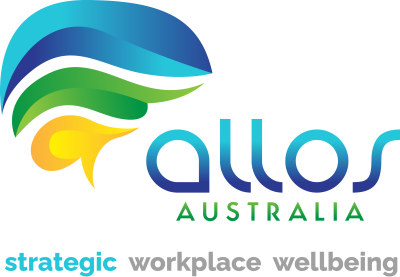This post is part of our series on The 5 Evidence-based Foundations of a Mentally Healthy Workplace.
What is a ‘community mindset’?
Community mindset refers to an overarching attitude where people share a sense of belonging to a group, and work together for both individual and overall group success.
What does community mindset look like in the workplace?
As ‘community mindset’ is dependent on a sense of membership to a group, the relationships within that group need to be positive in nature to reap the rewards of true social support. Identification with a group providing positive social support is linked with higher self-esteem and mental health protection. In the workplace, positive social relationships between employees and management are linked with higher job-satisfaction, reduced absenteeism and staff turnover.
When a strong community mindset is in place, employees may also support one another outside of work-related contexts, forming meaningful healthy relationships and further improving overall mental health. Practically, community mindset in the workplace might look like employees & managerial staff supporting one another through personal encouragement, task-load assistance and an overall pleasant working environment.
On an organisational level, community-minded workplaces encourage worker involvement in large scale planning, delegation and discussion where possible. Management and fellow employees are often more understanding and accommodating of workers with families and of individuals who take time to look after themselves (through physical or mental illness or hardship). These community-minded workplace qualities are linked to increased mental wellbeing, creativity and job commitment.
What are the benefits of a community mindset in the workplace?
There are a multitude of benefits to implementing a community mindset in the workplace. Here are just a few:
- Growth Mindsets – While this blog discusses the benefits of a community mindset, a growth mindset is a welcome by-product. A strong community connection is linked with an increase in growth mindsets among community members. A growth mindset describes a belief within an individual that they are able to learn, improve and grow if they put in the work to do so. A growth mindset can empower employees to learn new skills within the workplace and believe in their abilities when presented with difficult tasks, increasing overall productivity.
- Positive Staff Relationships – In the workplace, positive social relationships between employees (and management staff) are linked with higher job-satisfaction, reduced absenteeism and staff turnover. With a strong community mindset in place, employees may also support one another outside of work-related contexts. Forming these meaningful healthy relationships further improves individual mental health, and so contributes to the overall mental health of the workplace.
- Job Commitment – Strong workplace communities and the positive relationships within them are also linked with increased job commitment, cooperation, trust and teamwork behaviours among staff. Including staff in planning and related matters where possible demonstrates transparency, increasing perceived trustworthiness of the employer organisation amongst employees.
How do you begin building a community mindset in the workplace?
A community mindset cannot be achieved overnight, especially if a history of individualistic or competitive culture exists. Like most things in the workplace, leaders leading by example is often the best place to start. Leaders able to demonstrate the benefits of working cooperatively for the good of the workplace community can encourage others to follow suit in recognition of these benefits and the feeling of belonging that is achieved.
As stated previously, worker inclusion in planning in small or large scale projects can build a sense of value and pride among workers for the workplace they are contributing to. Encouraging team-based tasks where possible can help employees connect to one another and begin developing positive workplace relationships. Again as we’ve learned, positive relationships and social support in the workplace allow individual mental health to flourish and consequently impact positively upon workplace environment and productivity whilst reducing burnout, absenteeism and turnover.
What next?
We’ve covered two of five foundations of a mentally healthy workplace. Workplaces are intricate and complex. There are many moving parts, all of which differ workplace to workplace with no workplace the same. For an accurate assessment of your workplace and its needs, contact us here at Allos Australia. Our proactive EAP approach can give your workplace and its employees the upper hand through tailored preventative approaches. Creating mentally healthy workplaces is a group effort.
“ The greatness of a community is most accurately measured by the compassionate actions of its members.” – Coretta Scott-King

